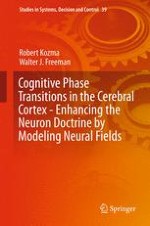2016 | OriginalPaper | Buchkapitel
22. Commentary by Giuseppe Vitiello
Filling the Gap Between Neuronal Activity and Macroscopic Functional Brain Behavior
verfasst von : Giuseppe Vitiello
Erschienen in: Cognitive Phase Transitions in the Cerebral Cortex - Enhancing the Neuron Doctrine by Modeling Neural Fields
Aktivieren Sie unsere intelligente Suche, um passende Fachinhalte oder Patente zu finden.
Wählen Sie Textabschnitte aus um mit Künstlicher Intelligenz passenden Patente zu finden. powered by
Markieren Sie Textabschnitte, um KI-gestützt weitere passende Inhalte zu finden. powered by
